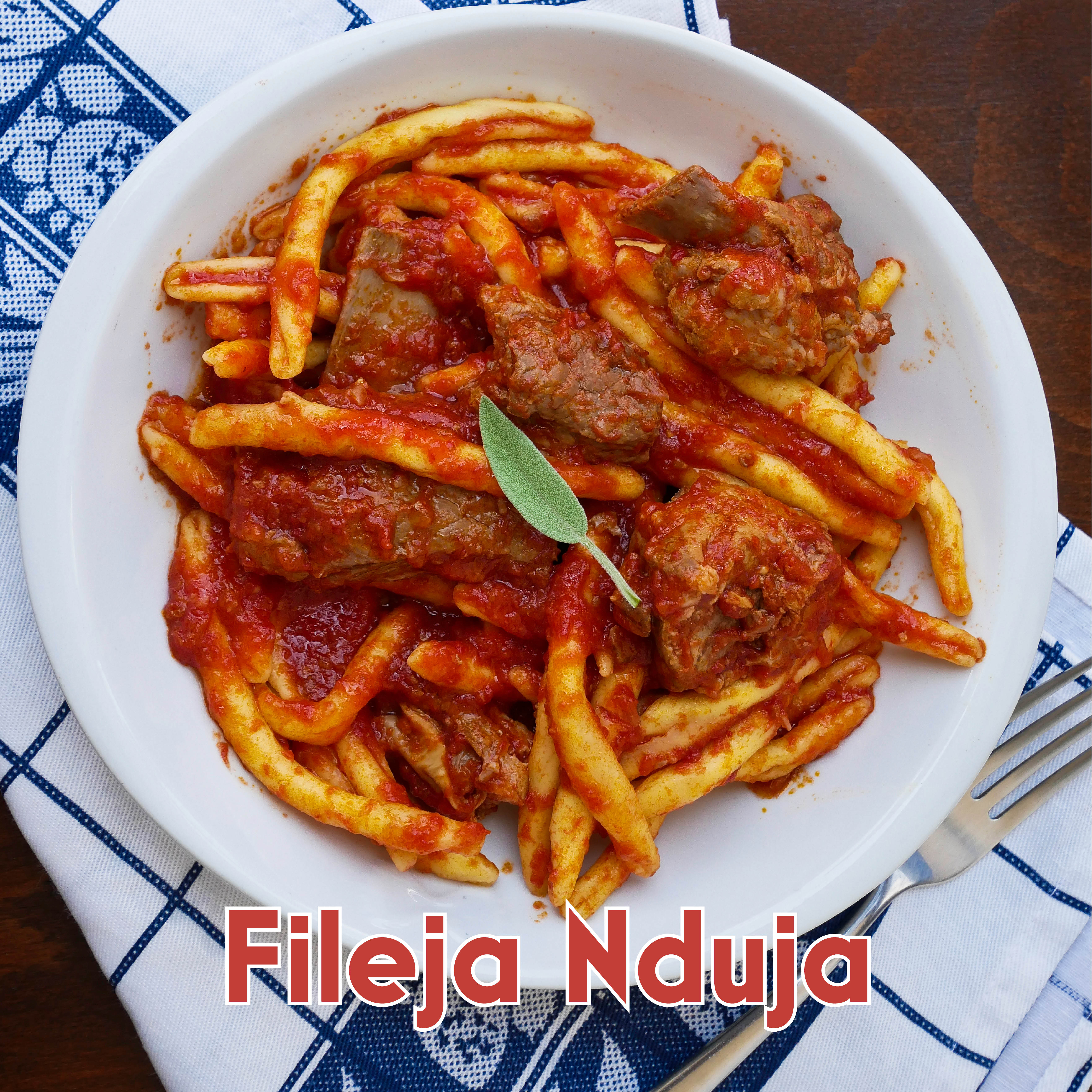Calabria
Calabria is a region located in southern Italy in what many call the “toe of the boot”. It has the oldest evidence of human habitation in Italy and was the first area to be called “Italia”, as we know this name eventually expanded to name the rest of the country. Calabria is covered in mountains, plateaus and hills. It is one of the least developed regions in the country and possesses Italy’s largest national park. Surrounded by coastline it has many beaches as well as some good skiing in the winter, so it is visited by tourists year round.
The region’s two largest industries are food and textiles. Calabria has the second highest number of organic farms in Italy and produces a lot of olive oil as well as the highest amount of porcine mushrooms in the country. Bergamot Oranges have also been actively cultivated here since the 18th century. Fileja and Lagane are pasta shapes specific to the region. Pork, like in most of Italy, is important to Calabrian cuisine and is often made into sausages or put in a ragu sauce. Much of Calabrian food is known for being spicy. Pepperoncino is a hot pepper grown in this region and used in Calabrian cooking. Often food is put through processes to be preserved. Smoking or salting for meat and fish, jarring in olive oil for vegetables; sundried tomatoes, eggplant, etc are common. With such a large coastline Calabrians eat a lot of fish, most popularly swordfish. Sweets are often doughy and contain a lot of honey, though licorice is also a favorite.
Fileja Nduja
- 1 lb. Glorioso’s Bulk Italian Sausage
- 1 lb. Rustichella d’Abruzzo Strozza Pretti Pasta
- 4-5 T. Glorioso’s Napa Extra Virgin Olive Oil
- 2 cloves garlic, crushed
- 2 medium-sized red onions, chopped
- 2-3 T. Glorioso’s Chianti red wine (optional)
- 1 can of tomato puree
- 1 chili pepper, sliced in half (or server red pepper flakes on side)
- 1 T. fresh oregano
- Glorioso’s Pecorino to taste, grated
- salt to taste
Remove the sausage from casing. Crumble it with your fingers and set aside.
Heat a lare saute pan with olive oil and add the garlic over a medium flame. Saute garlic until golden. It can be removed or left in if preffered.
Add the crumbled sausage and toss well to coat in the oil, Then leave to cook. Stir occasionally once the meat starts to lightly carmelize.
Add the onions and toss well. Let cook an additional 5 minutes, until the onions soften.
Deglaze with the red wine, if using. Once the red wine had reduced, add the tomato sauce, the chili pepper, if desired, amd a little salt.
Cover and let cook on a low flame for 20 min. stirring occationally.
Bring a large pot of salted water to a boil. Add pasta and cook for 3-4 minutes. (It will finish cooking in sauce pan)
Once the ragu has thickened nicely, taste it and readjust for seasoning if necessary.
Reserve 1 cup of pasta water. Add strained pasta to sauce pan, increase heat and add oregano, a couple tblsp of Pecorino. Slowely add water as needed.
Toss well and reduce quickly (2-3 min.) Before serving toss pasta with 2-3 tblsps. of Extra Virgin Olive Oil.
